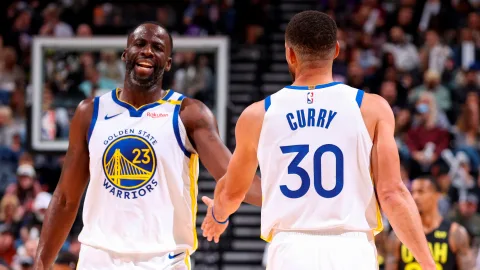Tennis Faces Scrutiny as Content Chokehold Risks Wasting Stars Like Coco Gauff and Carlos Alcaraz

Tennis is at a crossroads. While the sport continues to produce magnetic young talents like Coco Gauff and Carlos Alcaraz, a growing number of fans, analysts, and insiders argue that tennis is failing to market its stars effectively. With rigid content restrictions and outdated broadcast strategies, the sport may be unintentionally suffocating its own growth.
Coco Gauff, a Grand Slam champion and rising global icon, has shown the charisma, drive, and authenticity that should easily translate to mainstream popularity. Likewise, Carlos Alcaraz, with his explosive playing style and humble charm, has already won over hardcore fans and casual viewers alike. Yet, despite their potential to transcend the sport, tennis has yet to fully leverage their star power. Many believe the problem lies not with the athletes themselves, but with how the sport’s governing bodies handle content distribution and visibility.
Unlike sports such as basketball, soccer, or even Formula 1, tennis is fragmented. It lacks a centralized promotional engine and instead operates under multiple organizations—ATP, WTA, ITF, and the Grand Slam boards—all with their own rights and priorities. This disjointed structure has led to strict limitations on sharing video clips, highlights, and behind-the-scenes content. In today’s digital age, where viral moments drive engagement and attract new audiences, this model is out of sync with modern media consumption.
Social media thrives on quick, shareable moments that hook viewers and create buzz. When fans can’t access or share the best parts of a match—like a thrilling rally, an emotional reaction, or a standout celebration—the excitement fades. Worse, when platforms like Instagram, TikTok, and YouTube are unable to capitalize on these moments, tennis misses a golden opportunity to connect with younger, digitally native audiences. These are the very people who could become lifelong fans if given the chance to engage with the sport more freely.
The comparison to the NBA is often made for good reason. The league actively encourages content sharing, allowing highlights to circulate freely, which fuels conversation and grows its audience globally. Tennis, by contrast, is still operating in a controlled, television-first model that restricts growth and keeps its brightest stars in the shadows.
Coco Gauff and Carlos Alcaraz represent a new era of tennis—diverse, energetic, and media-savvy. They understand how to connect with fans both on and off the court. But without structural changes to how content is managed, their ability to build a global following may be stifled. For tennis to thrive in the future, the sport must evolve its media approach. Loosening the grip on content, embracing digital storytelling, and promoting its young stars with the freedom they deserve isn’t just smart—it’s necessary.
If tennis fails to adapt, it risks squandering a golden generation of talent. And in a world full of competing sports and entertainment options, even legends in the making like Gauff and Alcaraz could slip through the cracks.




